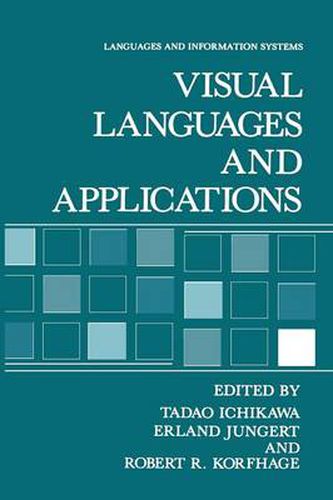Readings Newsletter
Become a Readings Member to make your shopping experience even easier.
Sign in or sign up for free!
You’re not far away from qualifying for FREE standard shipping within Australia
You’ve qualified for FREE standard shipping within Australia
The cart is loading…






This title is printed to order. This book may have been self-published. If so, we cannot guarantee the quality of the content. In the main most books will have gone through the editing process however some may not. We therefore suggest that you be aware of this before ordering this book. If in doubt check either the author or publisher’s details as we are unable to accept any returns unless they are faulty. Please contact us if you have any questions.
The interface between the user of a computer-based information system and the system itself has been evolving at a rapid rate. The use of a video screen, with its color and graphics capabilities, has been one factor in this evolution. The development of light pens, mice, and other screen image manipulation devices has been another. With these capabilities has come a natural desire to find more effective ways to make use of them. In particular, much work has gone into the development of interface systems that add visual elements such as icons and graphics to text. The desire to use these visual elements effectively in communication between the user and the system has resulted in a healthy competition of ideas and discussion of the principles governing the development and use of such elements. The present volume chronicles some of the more significant ideas that have recently been presented. The first volume in this series on the subject [Visual Languages (Chang, Ichikawa, and Ligomenides, eds. ), Plenum, 1986] covered work done in the early days of the field of visual languages. Here we represent ideas that have grown out of that early work, arranged in six sections: Theory, Design Systems, Visual Programming, Algorithm Animation, Simulation Animation, and Applications. I THEORY Fundamental to the concept of visual languages is the convIctIOn that diagrams and other visual representations can aid understanding and communication of ideas. We begin this volume with a chapter by Fanya S.
$9.00 standard shipping within Australia
FREE standard shipping within Australia for orders over $100.00
Express & International shipping calculated at checkout
Stock availability can be subject to change without notice. We recommend calling the shop or contacting our online team to check availability of low stock items. Please see our Shopping Online page for more details.
This title is printed to order. This book may have been self-published. If so, we cannot guarantee the quality of the content. In the main most books will have gone through the editing process however some may not. We therefore suggest that you be aware of this before ordering this book. If in doubt check either the author or publisher’s details as we are unable to accept any returns unless they are faulty. Please contact us if you have any questions.
The interface between the user of a computer-based information system and the system itself has been evolving at a rapid rate. The use of a video screen, with its color and graphics capabilities, has been one factor in this evolution. The development of light pens, mice, and other screen image manipulation devices has been another. With these capabilities has come a natural desire to find more effective ways to make use of them. In particular, much work has gone into the development of interface systems that add visual elements such as icons and graphics to text. The desire to use these visual elements effectively in communication between the user and the system has resulted in a healthy competition of ideas and discussion of the principles governing the development and use of such elements. The present volume chronicles some of the more significant ideas that have recently been presented. The first volume in this series on the subject [Visual Languages (Chang, Ichikawa, and Ligomenides, eds. ), Plenum, 1986] covered work done in the early days of the field of visual languages. Here we represent ideas that have grown out of that early work, arranged in six sections: Theory, Design Systems, Visual Programming, Algorithm Animation, Simulation Animation, and Applications. I THEORY Fundamental to the concept of visual languages is the convIctIOn that diagrams and other visual representations can aid understanding and communication of ideas. We begin this volume with a chapter by Fanya S.